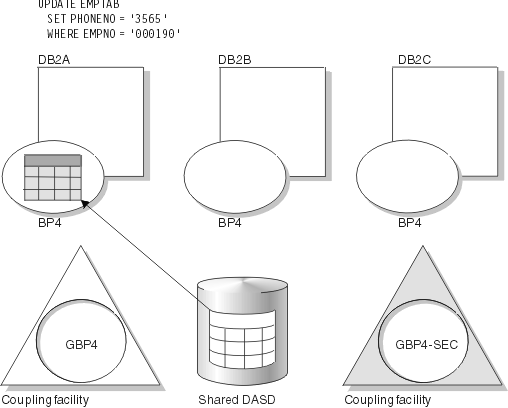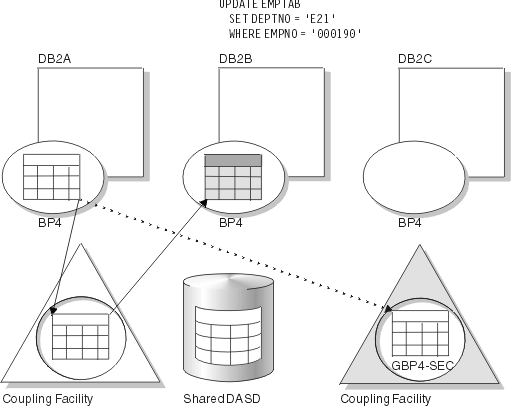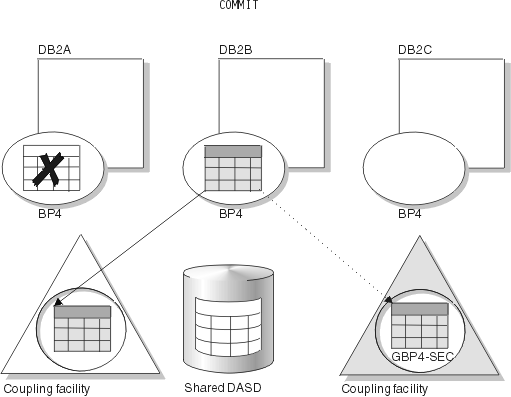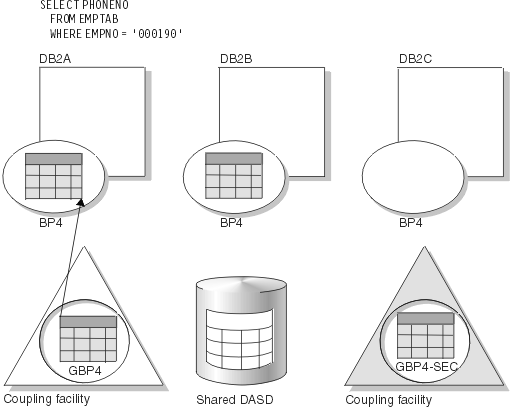How an update happens
When you are deciding whether to use data sharing, it can help to understand how data is updated in a data sharing environment.
In the following illustrations, the most recent version of the data page is shaded. This scenario assumes that the group buffer pool is used for caching changed data that is duplexed for high availability. Duplexing is the ability to write data to two instances of a structure: in this case, a primary group buffer pool and a secondary group buffer pool.
Suppose, as shown in the following figure, that an application issues an UPDATE statement from DB2A. The data that is being updated does not already reside in either the member's own buffer pool or the group buffer pool; therefore, DB2A retrieves the data from disk and updates the data in its own buffer pool. Simultaneously, DB2A gets the appropriate locks to prevent another member from updating the same data at the same time. After the application commits the UPDATE, DB2A releases the corresponding locks. The changed data page remains in DB2A's buffer pool.

Next, suppose another application, that runs on DB2B, needs to update the same data page as shown in the following figure. DB2® dynamically detects inter-DB2 interest in the page set, so DB2A writes the changed data page to the group buffer pools (both primary and secondary). DB2B then retrieves the data page from the primary group buffer pool.

After the application that runs on DB2B commits the UPDATE, DB2B moves a copy of the data page into the group buffer pools. This invalidates the data page in DB2A's buffer pool as shown in the following figure. Cross-invalidation occurs from the primary group buffer pool.

Now, as shown in the following figure, when DB2A attempts to reread the data, it detects that the data page in its own buffer pool is invalid. Therefore, it reads the latest copy of the data from the primary group buffer pool.
